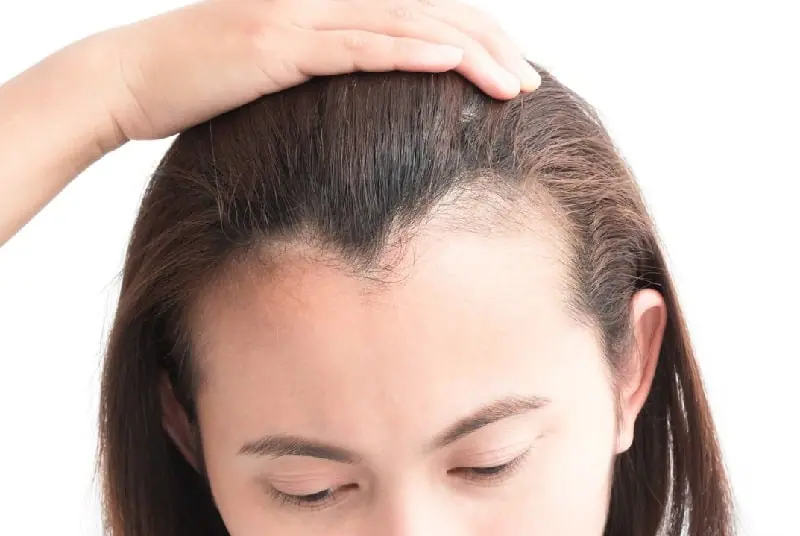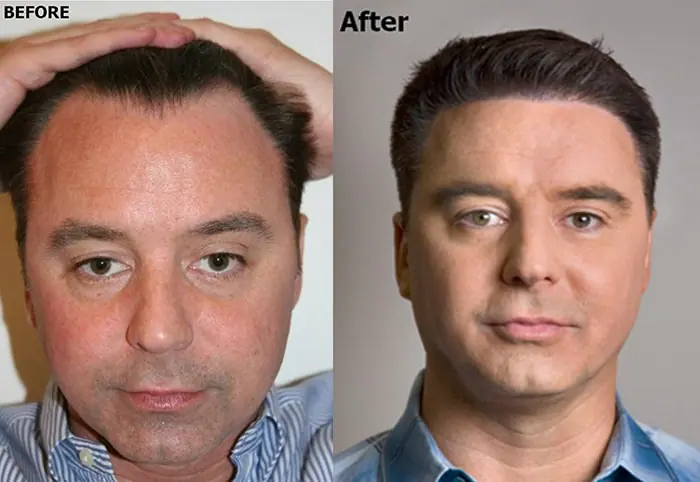How does Forehead Reduction Surgery Work?
In the world of plastic surgery, Hairline lowering or forehead reduction is a remarkable procedure designed to give you a fresh and rejuvenated appearance. This surgical artistry showcases the skills and precision required to reduce the distance between your hairline and eyebrows.
The duration of hairline lowering typically takes around two hours, with the final timeline dependent on your unique facial characteristics. Many patients opt to combine this surgery with other cosmetic procedures, such as eyebrow lifts, to optimize their time and expenses.
On this enchanting journey, a skilled surgeon initiates the process with delicate incisions on your scalp, meticulously removing excess skin from the forehead area.
This intervention not only helps in shortening the gap between your hairline and eyebrows but also imparts a harmonious look to your face.
Before commencing the surgery, a new hairline is meticulously planned for you. Following this stage, the surgeon performs precise incisions to remove excess skin from the forehead area. Finally, the skin is gently repositioned forward, and the incisions are carefully closed.
What to Expect When You Schedule Surgery
Hairline lowering (or forehead reduction), a procedure that redefines your forehead, is a truly transformative experience in the realm of plastic surgery. In just two hours, this remarkable technique brings about immediate visible results. However, the journey to complete recovery takes time, approximately 12-18 months, and we’ll be there to guide you through every step.
Forehead reduction pre-treatment preparations:
Ensuring your health before hairline lowering greatly aids in your recovery. More than a month before your surgical procedure, take the following steps to ensure you have the best experience:
- Cease the use of aspirin and aspirin-related products (ibuprofen) at least one week or more prior to surgery unless your primary physician advises otherwise and informs your surgeon.
- Abstain from alcohol consumption from two days before the surgery until after the procedure.
- Refrain from eating or drinking (at a minimum) six hours before the operation.
- Arrange for a post-surgery caregiver to assist you.
Day of the hairline lowering surgery:
On the day of the Forehead reduction surgery, you must have a driver to take you home.
- Ensure that you thoroughly wash your face and hair. Detangle your hair knots.
- Avoid using any makeup, creams, or products on your face or hair.
- Take an oral antibiotic dose with a small sip of water.
- Wear a front-zippered or buttoned shirt and comfortable attire.
- If you prefer to hide your bandages upon leaving the clinic, have a jacket, hooded sweatshirt, or scarf on hand to wrap around your head.
During the hairline lowering surgery:
Forehead reduction or hairline lowering surgery typically occurs under local anesthesia. The process takes about two hours. An irregular trichophytic incision is created behind the first two rows of your natural hairline during the operation. This innovative method allows hair to regrow through the scar, making it inconspicuous. The scalp skin is then elevated and lifted forward to achieve the desired forehead height.
The incision is meticulously closed in layers to create very fine sutures along the hairline, minimizing noticeable scarring. A dressing is applied to reduce the hairline, and patients can typically remove the dressing the day after surgery, with no need for additional bandaging.
Post-Surgery Care for hairline lowering:
Caring for yourself and following all guidelines in the weeks following Forehead reduction surgery is crucial, including:
- Rest and relax with your head elevated above your chest for the first 3-5 days.
- Maintain proper hydration. Utilize a low-sodium protein-rich diet to assist in reducing swelling and ensure a smooth recovery.
- Apply frozen peas, wrapped in a thin washcloth, intermittently to the eye area for 36-72 hours following surgery.
- Use a gentle barrier, like a thin, clean washcloth, between the plastic and your skin. Any bruising and swelling will shift downwards after the hairline lowering, becoming more pronounced around the upper and lower eyelids and cheeks.
- If needed, take your prescribed pain medication every 4-6 hours. To minimize nausea, always take the pain medication with food. If you are pain-free, abstain from taking the medication. For minimal discomfort, stick to Tylenol Extra-Strength only and avoid aspirin or aspirin-related products.
- Clean the incisions of hairline lowering surgery with hydrogen peroxide-soaked Q-tips. Gently dab Q-tips moistened with hydrogen peroxide on the incision area and sutures. This helps eliminate dried blood and maintains the cleanliness of the incision. Subsequently, apply antibiotic ointment directly to the incision or sutures with a clean Q-tip or your finger. Apply it three times a day for the first 7-10 days (continue until your first postoperative visit). The aim is to keep the incision clean, prevent scab formation, and keep it moist. You may discontinue hydrogen peroxide use if the incision is clean, but continue localized antibiotic ointment application.
- Refrain from strenuous exercise and vigorous aerobic activities for one week.
- Sensations of itching and numbness during recovery are common and may persist for up to one year. You may also notice fine hair thinning. No need to worry; your hair typically begins to regrow after about 3 months.
In 12-18 months, the results of your forehead reduction will appear natural and breathtaking.
How Long Does it Take to Recover from Forehead Reduction Surgery?
The pace of recovery from hairline lowering, although largely dependent on the individual and the specifics of the surgical procedure, typically spans about a week. Many patients find themselves resuming their regular activities within a week of hairline lowering post-surgery, as this period is usually sufficient for swelling and bruising, common after such a procedure, to subside considerably. Most patients can return home the day following the surgery without surgical bandages. Many opt for hats or headbands to cover the sutures when resuming everyday activities like work or school within a week.
While most physicians recommend that patients refrain from strenuous activities for the first week or more post-surgery, patients are committed to hiding the incision for up to 3 months as it fades.
In the initial few days of hairline lowering post-surgery, patients are prescribed pain-relief medications. To minimize swelling and bruising, it is essential to keep your head elevated, even while sleeping. Multiple pillows to keep your head upright can be beneficial in facilitating the recovery process.
The subsequent stages of care primarily revolve around maintaining the cleanliness of the incision site and preventing potential infections. In most cases, the surgical sutures or staples are removed by your surgical team a week after the procedure.
You can anticipate a near-normal appearance within about a week, as pronounced swelling or bruising is typically minimal around the eyes. After a few months, you will witness the growth of hair through the incision, and the incision itself should be well on its way to recovery. Temporary numbness at the incision site may be felt for up to four to six months after surgery, which should diminish as nerves regenerate post-surgery.
Within six months after hairline lowering or Forehead reduction surgery, the incision should be fully recovered and beginning to fade. In the interim, most patients prefer to style their hair over the scar to keep it out of sight. Additionally, patients use headbands, hats, or scarves to conceal the incision.













